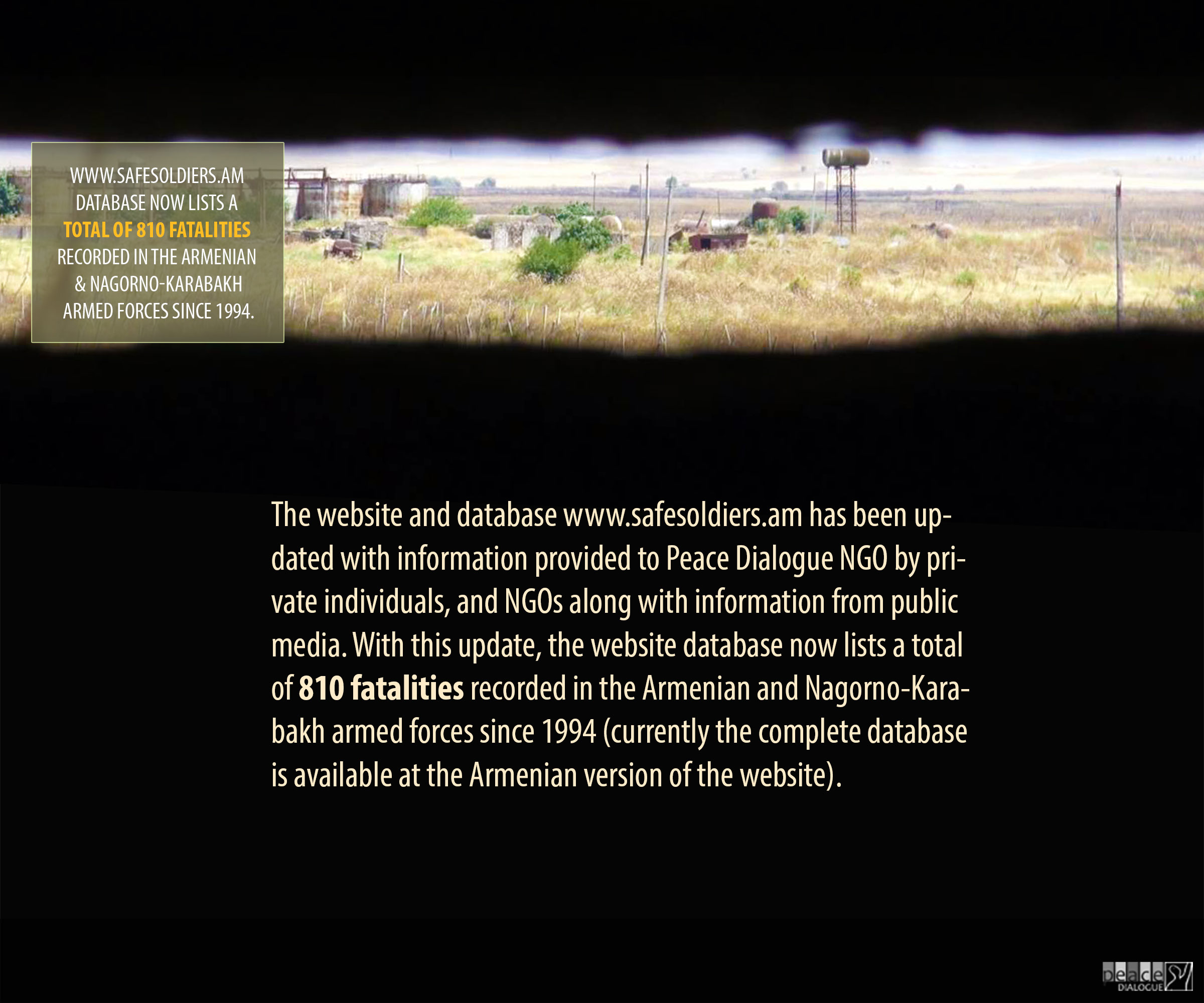
The website and database www.safesoldiers.am has been updated with information provided to Peace Dialogue NGO by private individuals, and NGOs along with information from public media. With this update, the website database now lists a total of 810 fatalities recorded in the Armenian and Nagorno-Karabakh armed forces since 1994 (currently the complete database is available at the Armenian version of the website).
For the period 2010-2014 the information can be considered with some exceptions, as the most complete in the database, since the public media more actively and continuously covered fatalities in the armed forces during this period than it has been in previous times. Even the number of recent fatalities is different in different sources. It is more difficult to find information about the losses in the 90s when there was a relatively peaceful situation.
The database therefore is still a work in progress particularly since the Ministry of Defense and other authorities constantly refuse to provide information to the organization regarding these tragic incidents. Moreover, in a court hearing presided over by Judge Arman Dilanyan on March 11, 2016 the Administrative Court of Armenia decided to reject Peace Dialogue NGO’s complaint challenging the legitimacy of the classification of secret information mentioned in Section 17, Point 42 and 43 in the list provided by Executive Order N9 of the Ministry of Defense, dated July 9, 2015, and to partially annul the executive order.
Based on the information in the database, of the 810 fatalities, the greatest number of cases 208, are cases of murder. Peace Dialogue has already recorded several cases of data manipulation, such as fatal incidents, or murders in combat presented as murders by the enemy, or murders presented as suicides, etc, however one categorizes them, the number of murder cases in the website is the highest.
Incidents are recorded in the database guided by official reports however, the descriptions of the cases also include findings which question the official report, such as the opinions and the testimonies of relatives, as well as information provided by certain media outlets, watchdog groups or other experts.
172 cases are the results of fatal incidents, 174 cases are the result of ceasefire violations, 83 cases are the result of health issues and 90 cases are recorded as suicides.
Out of 810 cases, 298 were recorded in Nagorno-Karabakh, while 339 were recorded in Armenia. The organization has not been able to find out the exact location for 173 of the incidents. (See here)
Based on the data collected so far, the organization has attempted to map the geographical distribution of the cases. Based on the map, most cases in Armenia were recorded in the Tavush region (96). Those fatalities recorded in NK were recorded in the Martakert region (109). The regions with higher concentration of murder cases are Syunik (61), Hadrut (60), Martuni (50) and Gegharkunik (43).
The greatest number of cases which resulted in death was recorded in the 2000 (77 cases). It should be taken into account that the organization does not have complete data for the year 2000. In the year 2015 there was only one case less (76). During the first three months of this year, 16 cases have been registered.



